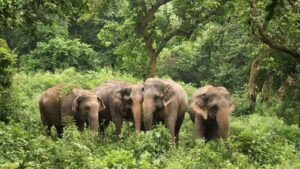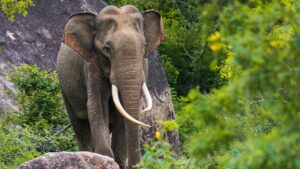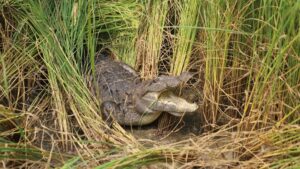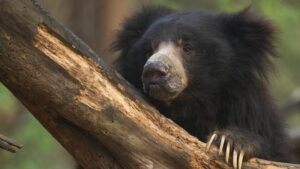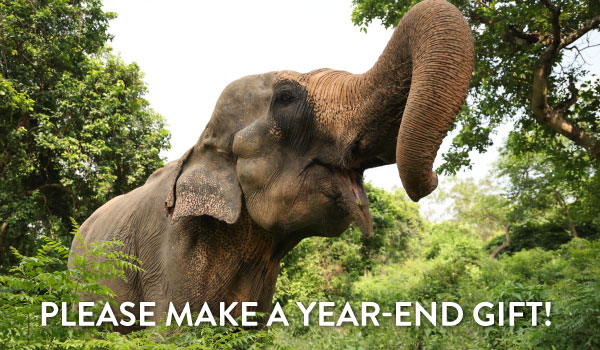India is a land rich in culture and heritage, and it is also home to breathtaking biodiversity. What is often overlooked is that the nation owes much of its wildlife conservation success to its brave women — women who have, and who are, working tirelessly to protect the country’s remarkable flora and fauna. From the northern mountains to the southern plateau, and from the western deserts to the lush northeast, Indian women have emerged as fierce protectors of wildlife and their habitats, overcoming social stigma by breaking gender stereotypes and inspiring future generations of conservationists.
Let’s introduce you to courageous, iconic women of India, whose commitment and leadership have shaped the course of wildlife and nature conservation.
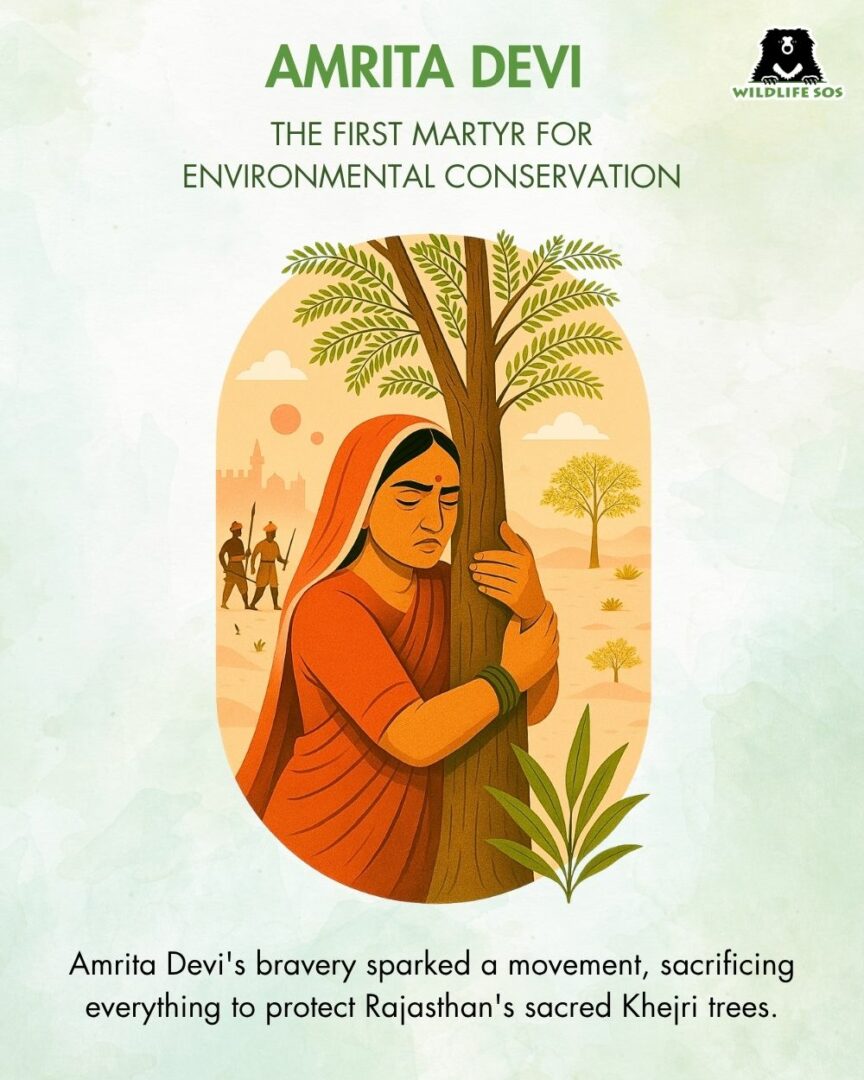
Amrita Devi from Rajasthan’s Bishnoi community became the first martyr ever to give her life in defending the holy Khejri tree (Prosopis cineraria) in the Thar desert. In 1730, when King Abhay Singh’s soldiers came to Khejarli village to fell trees to build a palace, the Bishnois protested, citing that cutting the Khejri trees was against their moral principles. These trees provided the needed shade as well as fodder for animals, and their loss would severely affect the soil’s fertility. To protect them, Amrita Devi hugged a Khejri tree and proclaimed she was ready to sacrifice her life to save the tree.
However, the soldiers brutally killed her and 362 others from her community. Amrita Devi’s brave act of rebellion brought the king to his knees to stop deforestation in the area. Her legacy lived on, and in 2001, the Indian government instituted the Amrita Devi Bishnoi Wildlife Protection Award in her memory. To date, the Bishnois continue to safeguard trees and animals such as blackbucks and chinkaras, protecting Rajasthan’s delicate desert environment.

Jamal Ara was born in 1929 in Bihar. She had completed studying only till the 10th standard, but rose to become an ornithologist, naturalist, a radio broadcaster and the first Indian woman writer covering the subject of conservation as well. A close friend of Salim Ali, India’s “Birdman”, she contributed importantly to habitat and species conservation by laying emphasis on ideas that were progressive for her time. It was only in the 1970s that her suggestions to create sanctuaries, a separate division in the forest department to conserve wildlife, and establish rules before entering forest areas were revived by those passionate about the wild.
Jamal Ara focused her attention on Chota Nagpur, now in Jharkhand, where she conducted field research of forests that serve as poignant records for the state today. With several feathers to her cap, Jamal Ara shared her knowledge of birds through her writings and radio programmes that reached Indian homes. In spite of her immense contribution, her name surprisingly remains relatively unknown in the narrative of conservation.
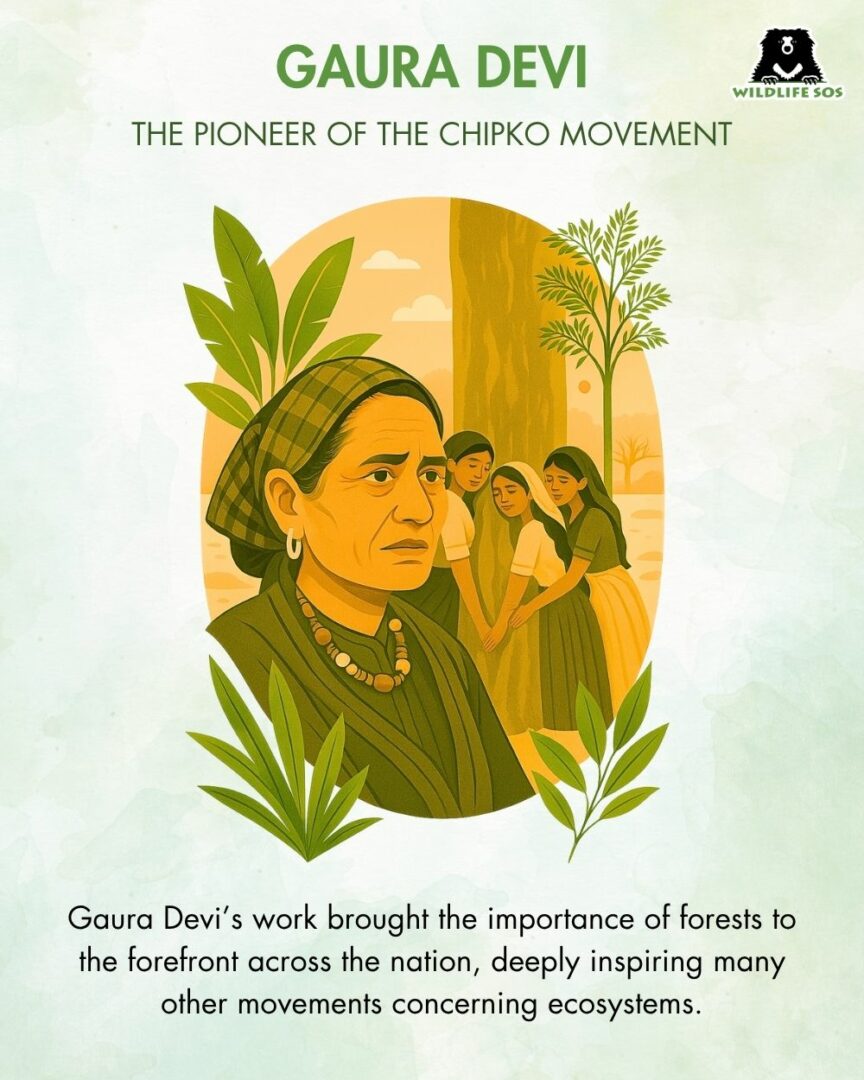
Gaura Devi, an unlettered woman of Reni village in Chamoli of Uttarakhand, initiated the socially driven Chipko Movement. Her fearless effort to save forests echoes Amrita Devi’s firm resolution to stop the cutting of trees. On March 26, 1974, 27 women led by Gaura Devi embraced trees, preventing the cutting down of 1,000 trees auctioned by the forest department.
The Chipko Movement is a symbol of grassroot environmental activism in India. Gaura Devi’s awe-inspiring act of courage was advocated by leading environment and social activists Sunderlal Bahuguna and Chandi Prasad Bhatt, making this local movement spread and gain nationwide importance.
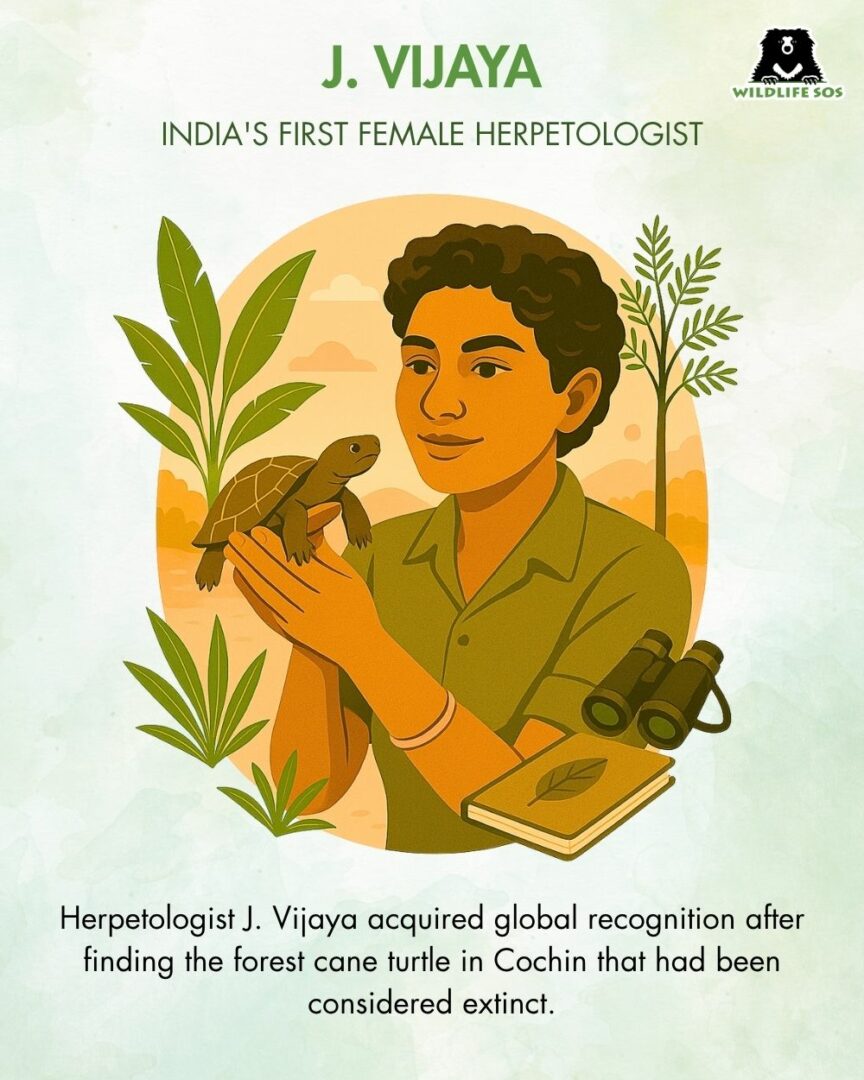
In her short life of 28 years, Jagannathan Vijaya created a magnificent impact in the field of turtle research and conservation. She was India’s first female herpetologist and turtle field biologist in the 1970s. Her profession was considered unusual and unsafe for women as it implied that she would live in Kerala’s forest caves for months to carry out fieldwork. It was in 1982, during her project as part of a globally renowned turtle specialist group, when J. Vijaya came across the forest cane turtle, one that was believed to be extinct for almost 70 years. It was much later in 2006 when the forest cane’s scientific name was given as Vijayachelys silvatica to always remember and honour Vijaya’s spectacular rediscovery.

A wildlife conservationist and animal activist, Geeta Seshamani has been championing animal welfare since her school days. Episodes involving the mistreatment of stray dogs in Delhi made Geeta Seshamani devote her time and attention towards protecting animals. In 1979, she became a part of Friendicoes-SECA (Society for the Eradication of Cruelty to Animals), an NGO offering care to urban stray animals, and is currently the Vice President of this charity. She is also the Co-founder of Wildlife SOS, a conservation organisation launched in 1995 that rescues and rehabilitates wildlife in distress. She has been an esteemed member of the Animal Welfare Board of India and the Central Zoo Authority, Government of India.
Geeta Seshamani has played a key role in ending the practice of ‘dancing’ bears in India. While rescuing numerous sloth bears, her vision was to also support the community that had been relying solely on this practice for their own livelihood. A focused Tribal Rehabilitation Programme was therefore launched. This project has helped over 12,000 Kalandar community children be educated, more than 3,000 women acquire skill training for alternate livelihoods and provide comprehensive support to nearly 5,000 families. Geeta Seshamani has been recognised and felicitated for her overwhelming efforts in conservation and community welfare in numerous ways, one of which is the Maharana Udai Singh Award she received in 2019.
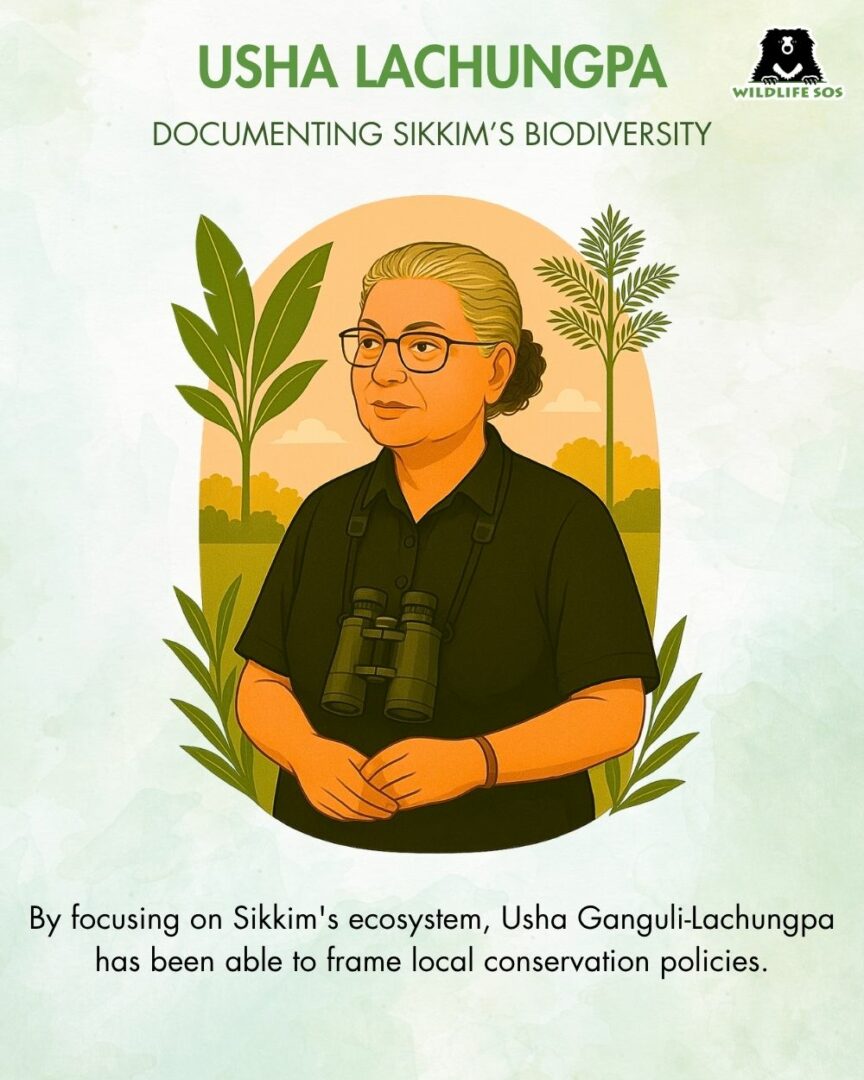
Initially aspiring to study veterinary science, Usha Ganguli-Lachungpa overcame family resistance and went on to become one of Sikkim’s top naturalists. Having worked with BNHS (Bombay Natural History Society), she brought with her the experience of wildlife conservation and joined the Sikkim Forest Department in 1986 for extensive research. She specialised in conserving biodiversity and documented the state’s unique fauna and flora in depth. Usha Lachungpa has been recognised and hailed by the government and NGOs, and has a grass species named after her as well! Her focus on conservation efforts takes into account the involvement of locals while protecting the environment.
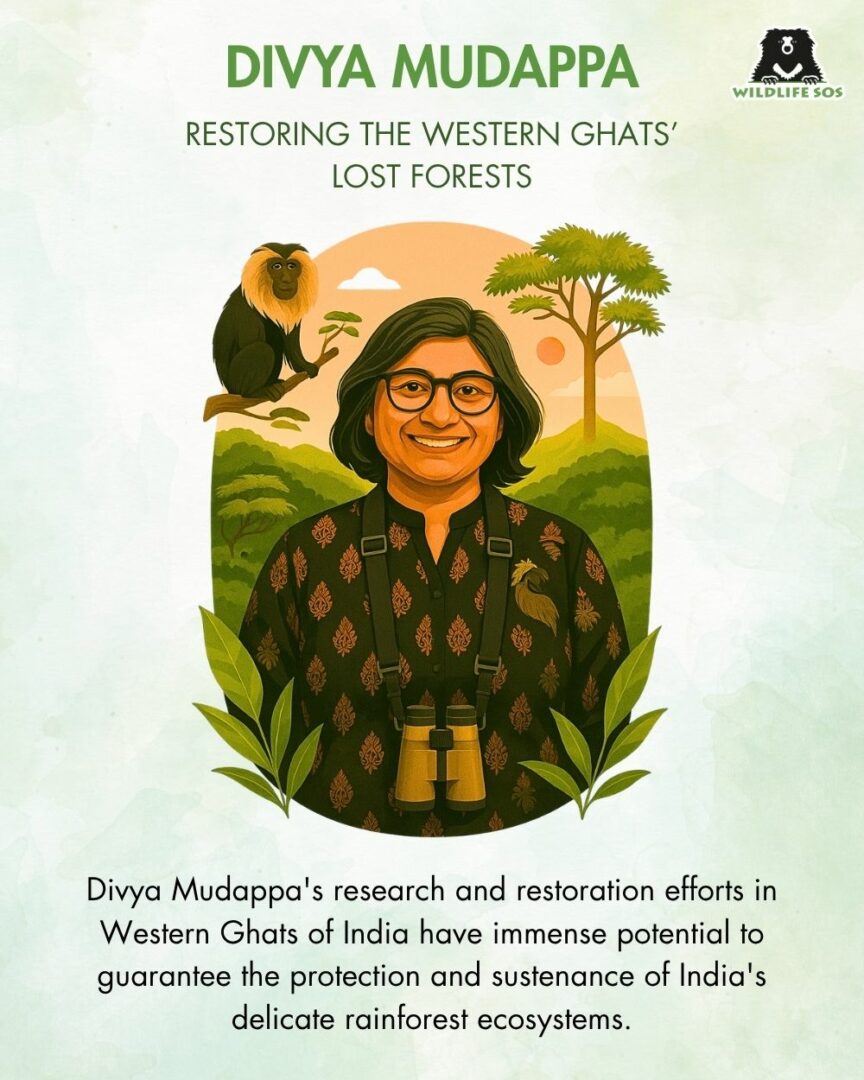
Wildlife biologist Divya Mudappa is committed to restoring the rainforests in the Western Ghats, a breathtaking mountain range along the western coast of India that is also a UNESCO World Heritage Site. Intrigued by how animal species interact with plant species, she focuses on the revival of the entire ecosystem that supports wildlife. By conducting reforestation efforts in Anamalai Hills since 2000, her focus is to restore native trees and rejuvenate fragmented habitats that can benefit wildlife such as the lion-tailed macaque that have been subjected to conflict scenarios. Divya Mudappa’s studies have shown that although ecological recovery takes time, it is essential. She has changed the perception of conservationists to believe that conservation can be done by actively restoring forests.
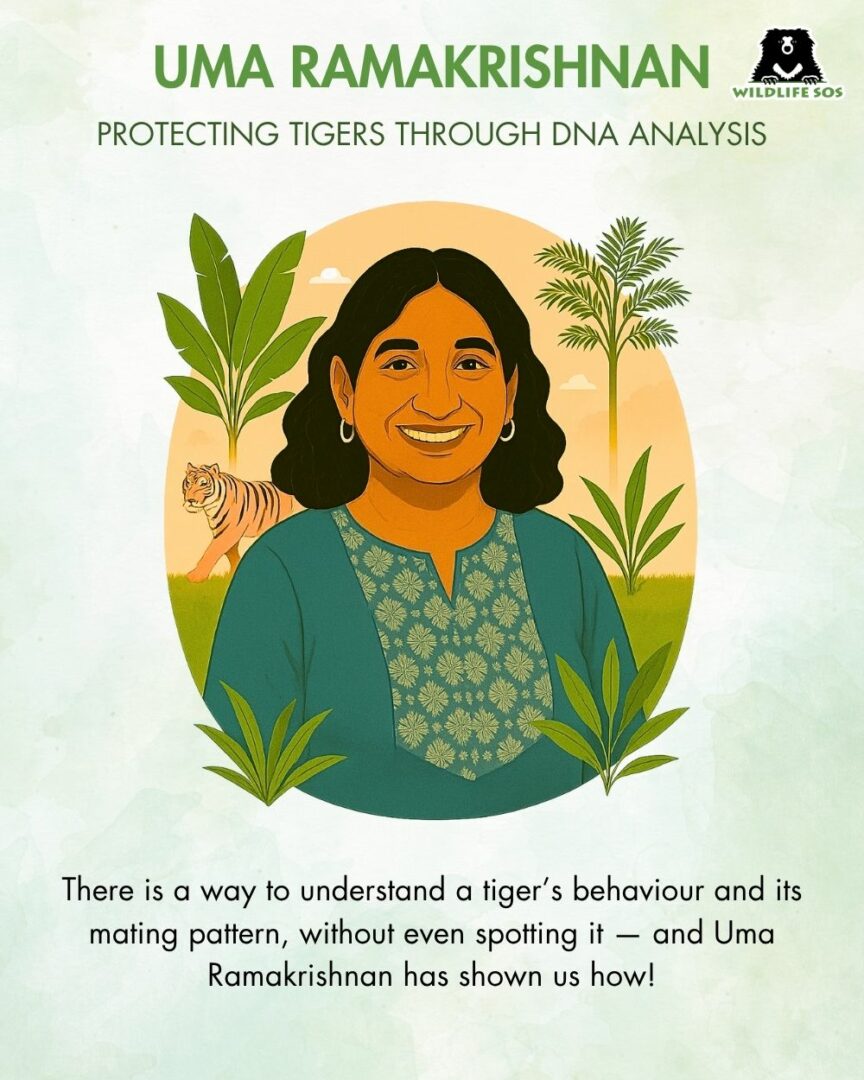
Molecular ecologist Uma Ramakrishnan’s conservation work revolves around mammals, including tigers, and she uses a rather scientific approach for it. Along with her team, she collects tiger scat that surprisingly holds valuable information about genetics and evolutionary history that needs to be decoded. While scat reveals what the tiger has eaten and if it is healthy, it also contains DNA that can disclose its mating pattern and even the tiger population distribution. Her approach of gathering relevant data on tigers in Karnataka has given a new path to India’s strategy for wildlife conservation, establishing that scientific lab work is as much a necessity as fieldwork.
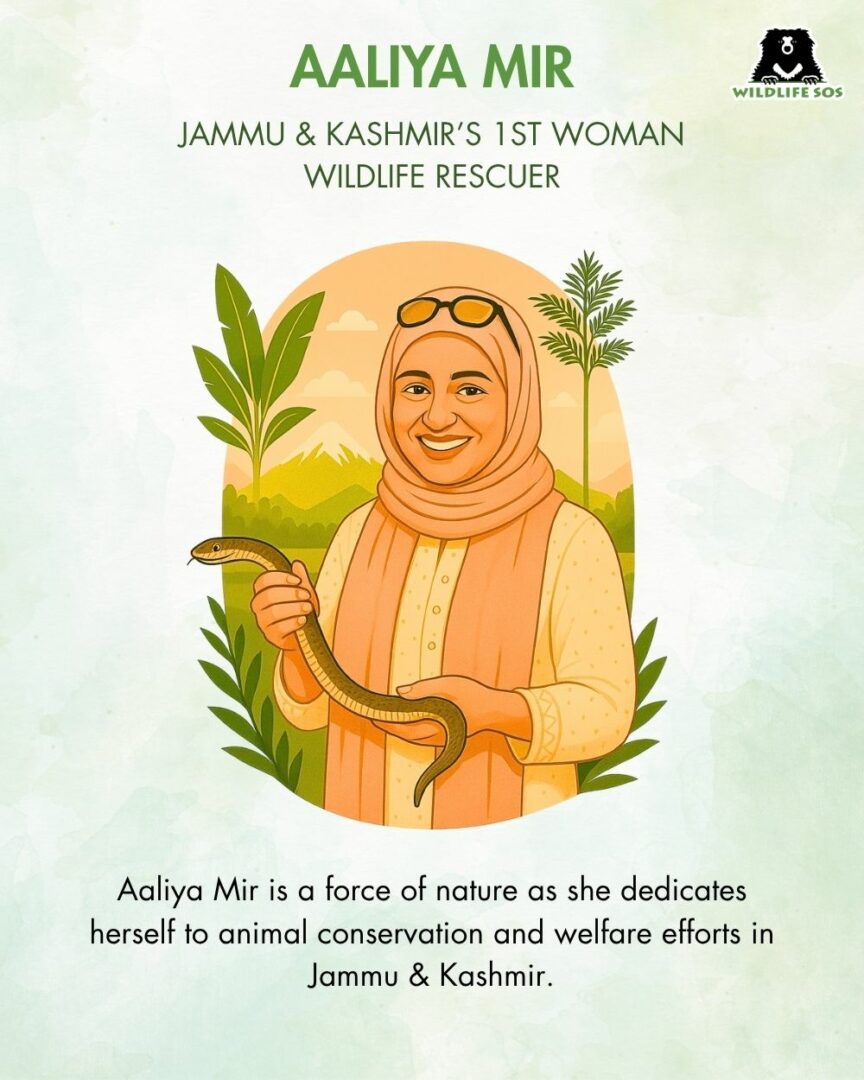
Aaliya Mir broke barriers and became Jammu & Kashmir’s (J&K) first female wildlife rescuer! Completing her post-graduation in Mathematics, Aaliya Mir found her calling in wildlife conservation. She is currently the Project Head and Education Officer at Wildlife SOS, and she specialises in rescuing injured and distressed animals that including venomous and non-venomous snakes. She is also leading initiatives to mitigate human-wildlife conflicts in J&K. Aaliya Mir has gained a respectable name in protecting wildlife, as she is deeply involved in spreading awareness among people and young children about local species, and how to respond to sudden encounters with them. In 2023, Aaliya Mir received the Wildlife Conservation Award, the first woman in J&K to achieve this honour.

Wildlife biologist, scientist and conservationist Nandini Velho has been recognised for following a multi-dimensional approach towards conservation to include nature, people and culture. She discovered her passion in Arunachal Pradesh at Pakke Tiger Reserve and Eaglenest Wildlife Sanctuary, and understanding that forest conservation needed to include activism, she played a major role in involving local communities to become protectors of the wild they are surrounded by. She widened her scope to fight for indigenous land rights and environmental policy. Collaborating with tribal groups and policymakers, she is committed towards making conservation initiatives inclusive and sustainable. Her efforts have been lauded, and she has been honoured with national and international awards.
Women as Custodians of Nature
Women have long held a crucial position in wildlife conservation. In Rajasthan’s Bishnoi community, it is the women who have long been protecting wildlife, treating animals as sacred beings. And in West Bengal’s Sunderbans, women have come forward and taken charge of protecting the only mangrove habitat in the world that hosts the royal Bengal tiger.Despite their invaluable contributions, women often remain the unsung heroes in this poignant subject. But an increase in awareness about their efforts can inspire the movement to save wildlife and guarantee the limelight that women in conservation truly deserve. We take this opportunity to celebrate their unwavering contributions and attentive approach to conserving and protecting Mother Nature’s remarkable residents. If you’d like to know about wildlife conservation, do subscribe to our monthly newsletter.
Photos: Wildlife SOS
Feature image: Mradul Pathak / Wildlife SOS


